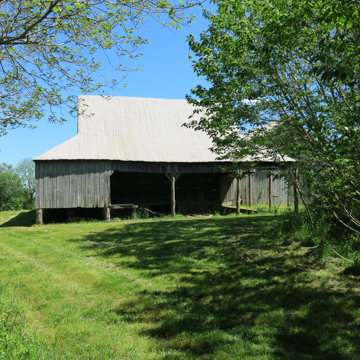Located in Greenwell State Park, this barn complex is a fascinating interconnected ensemble of agricultural outbuildings largely built over the course of three decades in the mid-nineteenth century. This rare survivor of agricultural life on Maryland’s Western Shore illustrates the importance of tobacco and corn cultivation. The oldest section is an earthfast log crib barn with cedar posts and roughly hewn white oak and chestnut logs V-notched together at the corners. This tobacco barn has been decisively dated to 1837 through dendrochronology corroborated by St. Mary’s Orphan Court records. In the 1840s the east shed extension for hanging tobacco to dry was rebuilt.
A large earthfast tobacco barn was added immediately to the south in the 1850s with a sizable open span to allow wagons to drive in. A tobacco prize or press is located in this barn for screw compressing dried tobacco leaves into hogsheads for transportation and sale. A corn crib structure immediately west of the log barn was also built in the 1850s but received a concrete unpinning in the twentieth century. Smaller changes were made during the early twentieth century such as adding tobacco drying sheds to the sides of the corn crib and a long vehicle shed on the south side of the 1850s tobacco barn. The Bond family, owners since 1863, sold the property to Greenwell State Park in 1973.









